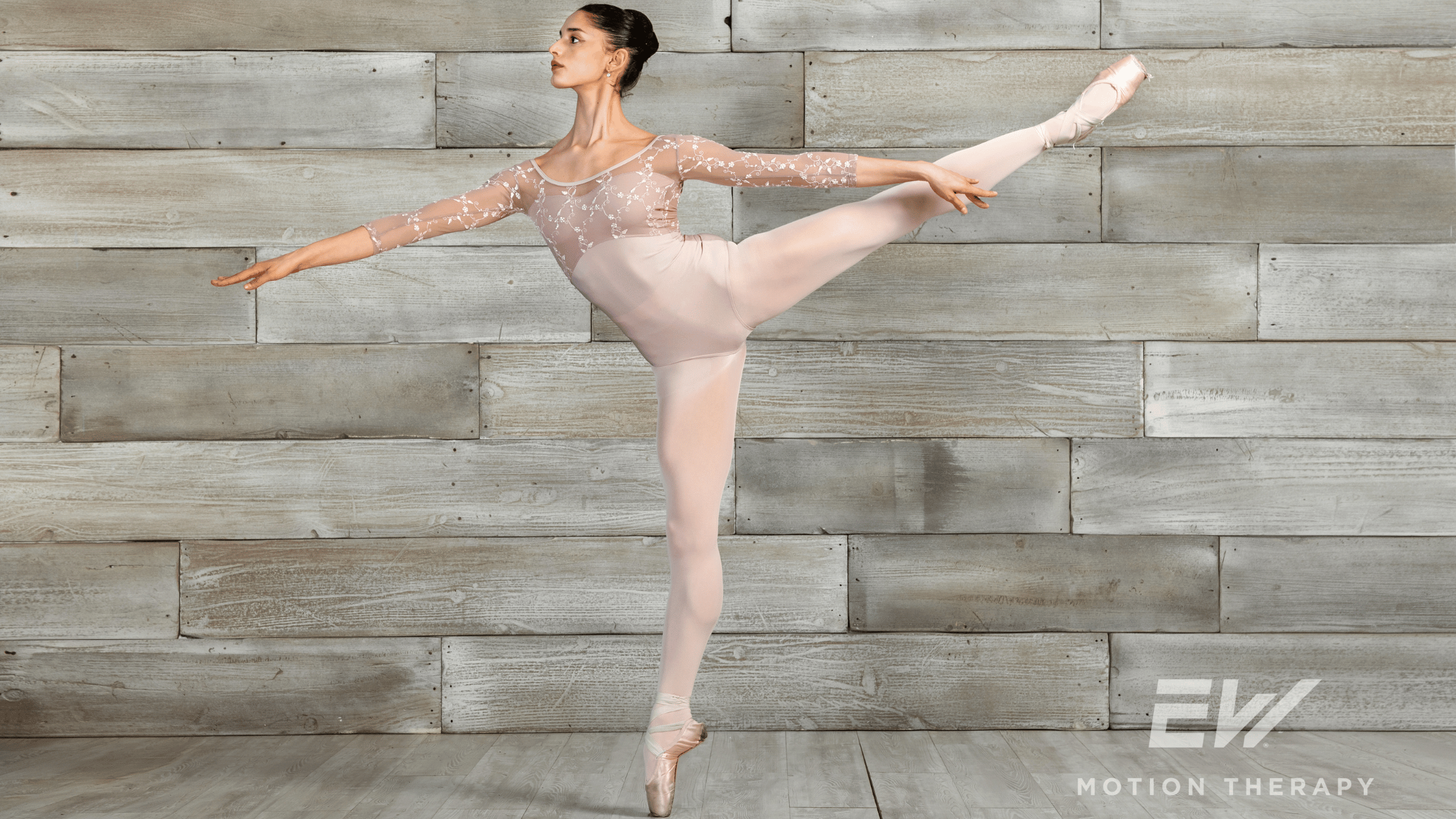How Can Dancers Improve Extension? Exercises and Physical Therapy

Licensed Physical Therapist, PT, DPT // EW Motion Therapy Homewood
Dance is a dynamic art form that demands strength, flexibility, and control. Among the many elements that define a dancer's skill, extension stands out as a critical component, especially in styles like ballet, jazz, and contemporary dance. Improving extension can elevate a dancer's performance, allowing them to create visually stunning lines and shapes with their bodies. In this article, we will delve into what extension is, why it is important for dancers, the consequences of inadequate extension, and how physical therapy can support dancers in achieving optimal extension.
What is extension in dance?
In dance, extension refers to the ability to fully stretch or lengthen a limb away from the body. For example, when a dancer lifts their leg to the front (devant), side (à la seconde), or back (derrière) to its fullest potential, they are demonstrating extension. A high extension is often considered a hallmark of technical proficiency and grace in dance, showcasing a combination of flexibility, strength, balance, and control.
There are several types of extensions in dance, including:
- Developpé: This involves slowly lifting the working leg through a passé position and extending it fully in any direction (front, side, or back).
- Arabesque: In this position, the dancer stands on one leg with the other leg extended directly behind them.
- Attitude: Similar to the arabesque, but the lifted leg is bent at the knee.
Achieving a high, controlled extension is more than just a display of flexibility. It involves the coordinated work of various muscle groups, including the hip flexors, glutes, hamstrings, quadriceps, core muscles, and the dancer's balance and alignment.
Why is extension important for dancers?
Extension plays a significant role in many dance forms, adding expressiveness, technical difficulty, and visual impact to movements. Here are some reasons why extension is crucial for dancers:
- Aesthetic appeal: Extensions create beautiful lines and shapes that are visually appealing to the audience. High extensions can convey elegance, strength, and fluidity, contributing to the overall artistry of a performance.
- Technical mastery: Mastering extension requires flexibility, strength, and control. Dancers who can perform high and controlled extensions are often seen as technically proficient.
- Range of motion and versatility: A greater range of motion allows dancers to perform various movements. This versatility can be especially valuable in auditions, where demonstrating a range of skills can set a dancer apart from others.
- Injury prevention: Proper extension can reduce the risk of injuries when achieved through balanced strength and flexibility. Dancers who overextend without proper conditioning may place undue stress on joints and muscles, leading to strains or tears.
What happens when dancers don’t get enough extension?
Insufficient extension in dance can have several repercussions, both aesthetically and physically:
- Limited artistic expression: A lack of extension can limit a dancer's ability to perform certain movements and sequences. It can restrict the choreography options available to them and reduce the visual impact of their performance.
- Increased risk of injury: Inadequate flexibility or strength to support high extensions can lead to compensatory movements, where other body parts try to "help" achieve the desired height or line. This compensation can cause misalignment and stress on the lower back, hips, knees, or ankles, and eventually lead to overuse injuries or acute strains.
- Poor technique and alignment: Without proper extension, dancers may develop bad habits or poor alignment, leading to long-term issues. For example, forcing turnout or compensating with the back can result in poor posture and technique, affecting overall performance quality.
Exercises to improve extension for dancers
To improve extension, dancers must focus on exercises that enhance flexibility, strength, and control. Here are some effective exercises targeting the muscle groups involved in achieving optimal extension:
Seated leg lifts
How to Perform: Sit on the floor with your legs straight out in front of you. Bend one knee so the foot is flat on the ground. Slowly lift the straight leg towards the ceiling. Hold for 3-5 seconds, then slowly lower it back down. Repeat 10-15 times on each leg for 2-3 sets.
Ballet barre lift-offs (front)
How to Perform: Stand facing the barre and place one foot on the barre or elevated surface directly in front of you. Lift the leg as high as possible with a straight knee, hold for 3-5 seconds, then slowly lower the leg. Repeat 10-15 times for 2-3 sets.

Ballet barre lift-offs (side)
How to Perform: Perform the same as above, but in second position (leg straight out to the side).

Single-leg RDL
How to Perform: Stand on one leg and hinge at the hips to slowly lean your torso forward until your trunk and other leg are about parallel with the floor. Keep the standing leg slightly bent. Squeeze with the glutes to return to the upright position. Repeat 10-15 times for 2-3 sets. Add weight in the opposite hand as the stance leg as necessary.
How physical therapy can help improve extension
Physical therapy can play a crucial role in helping dancers improve their extension safely and effectively. A physical therapist with expertise in dance medicine can provide personalized guidance and exercises tailored to a dancer's unique needs and goals. Here's how physical therapy can help:
- Assessment of strength and flexibility: A physical therapist can assess a dancer's current strength, flexibility, and range of motion. This assessment helps identify any muscle imbalances, tightness, or weaknesses that may limit extension.
- Customized exercise programs: Based on the assessment, a therapist can design a program that includes targeted stretching, strengthening, and conditioning exercises to improve flexibility and build the muscles necessary for extension.
- Injury prevention and rehabilitation: Dancers are at a high risk of injuries due to the repetitive and strenuous nature of their movements. Physical therapists can teach proper techniques and alignment to prevent overuse injuries and provide rehabilitation for existing injuries.
- Manual therapy and stretching techniques: Therapists can use hands-on techniques, such as manual stretching, joint mobilization, or massage, to improve flexibility and release tension in specific muscle groups.
- Education and body awareness: Physical therapists can educate dancers on proper body mechanics and alignment, helping them become more aware of their movements. This knowledge is crucial for achieving optimal extension without strain or compensation.
Extension is a vital element in dance that requires flexibility, strength, and control. By incorporating targeted exercises and seeking guidance from a physical therapist, dancers can work towards achieving higher, more controlled extensions while minimizing the risk of injury. Understanding the importance of proper technique and alignment will not only improve a dancer's extension but also enhance their overall performance and longevity in the art of dance. Physical therapy can be an excellent asset for any dancer’s career, improving performance and reducing injury risk. We love helping our dancers at EW Motion Therapy do this by creating individualized treatment plans for their unique needs and goals. To learn more about what physical therapy can look like for dancers, click the button below to download our answers to 20 frequently asked questions.


